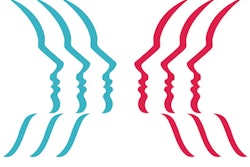Radiology reports are a treasure trove of unstructured data that may contain actionable findings that can influence medical decision-making. However, manually extracting meaningful information such as acute findings can be laborious and mind-numbing for humans, according to Dr. Falgun Chokshi of Emory University.
Natural language processing (NLP) techniques have typically relied on rules, essentially looking for exact matches to words or phrases supplied by humans. However, this doesn't account for all possible permutations of words or phrases that describe specific findings. As a result, the researchers sought to determine if intermediate and advanced machine-learning NLP techniques could be at least as accurate as two radiologists in identifying phrases that indicate four categories of findings on radiology reports. The analysis was based on reports by attending radiologists of head CT scans from intensive care patients.
The group found that the techniques paralleled the performance of the radiologists.
"By determining how accurate a machine is relative to human reference standards, we can work on more sophisticated machine-learning methods (i.e., deep-learning convolutional neural networks) to create a narrow-field artificial intelligence system that can extract text features (e.g., acute findings) and tabulate the findings as part of a larger database that could be used for quality studies, outcomes analysis, resource utilization studies, and predictive analytics and modeling," Chokshi told AuntMinnie.com. "Such development of machine-learning and artificial intelligence systems can allow large-scale analysis of text data that, as of today, is largely not used for meaningful information extraction, but in the near future could be used as an amazing source of rich data that can help transform how healthcare systems view outcomes, processes, and resource utilization."
Take in this talk on Tuesday morning to learn more.



















